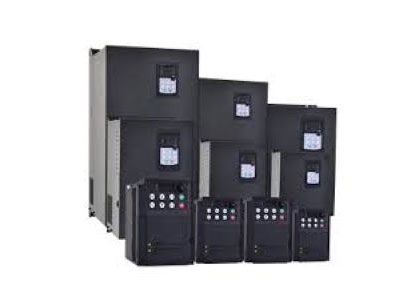Key Takeaway
A Variable Frequency Drive (VFD) is used to control the speed of electric motors. It does this by varying the motor’s input voltage and frequency. VFDs are essential in industrial applications where precise motor control is needed. They help in managing the speed of pumps, fans, conveyor belts, and other machinery. This control leads to better energy efficiency and reduces wear and tear on equipment. By using a VFD, you can improve process control and save energy, making it a crucial component in modern industrial plants.
Industrial Applications of VFDs
In industrial applications, VFDs are indispensable. They are commonly used to control the speed of conveyor belts, pumps, and fans, ensuring optimal performance and energy efficiency. For instance, in a manufacturing plant, VFDs regulate the speed of conveyor belts transporting goods, which can be adjusted based on the production rate, reducing energy consumption and wear and tear on the equipment.
VFDs also play a crucial role in HVAC systems within industrial settings. By controlling the motor speed of pumps and fans, they help maintain the desired temperature and airflow, which is vital for both product quality and worker comfort. Additionally, VFDs contribute to significant energy savings and extended equipment life, making them a cost-effective solution for many industrial processes.
In industries such as textiles, paper, and steel, VFDs are used to control the speed of large motors, allowing for precise adjustments in production processes. This flexibility enhances the quality of the final product while reducing operational costs. The ability to manage motor speed dynamically is a game-changer in industries where precision and efficiency are paramount.

VFDs in Commercial Settings
VFDs are not limited to industrial use; they have significant applications in commercial settings as well. In office buildings, shopping malls, and hospitals, VFDs are primarily used in HVAC systems to control the speed of fans and pumps. This ensures a comfortable environment for occupants while optimizing energy consumption.
For elevators and escalators, VFDs provide smooth and efficient operation. They allow for controlled acceleration and deceleration, enhancing passenger comfort and safety. Additionally, VFDs reduce mechanical stress on elevator components, leading to lower maintenance costs and extended lifespan of the equipment.
In water treatment facilities, VFDs are employed to control the speed of pumps and compressors. This precise control helps in maintaining consistent water pressure and flow rates, which is essential for efficient operation and energy savings. The use of VFDs in these facilities also contributes to reducing the environmental impact by minimizing energy consumption.
You May Like to Read
VFDs in Residential Applications
VFDs are increasingly finding their way into residential applications, bringing the benefits of energy efficiency and enhanced control to home environments. One common application is in heating, ventilation, and air conditioning (HVAC) systems. By adjusting the speed of fans and compressors, VFDs help maintain consistent indoor temperatures and humidity levels, leading to improved comfort and reduced energy bills.
In home appliances such as washing machines and refrigerators, VFDs enable variable speed operation, which enhances performance and energy efficiency. For example, in a washing machine, a VFD allows for precise control of drum speed during different wash cycles, ensuring thorough cleaning while conserving energy and water.
Another notable application is in home automation systems. VFDs can be integrated into smart home setups to control the speed of various motor-driven devices, such as ceiling fans, pool pumps, and garage door openers. This integration offers homeowners convenience, energy savings, and the ability to tailor device operation to their specific needs.
Specialty Uses of VFDs
Beyond the conventional applications, VFDs are used in several specialty areas. In the renewable energy sector, VFDs are integral to wind turbines and solar power systems. They help in converting and managing the variable power generated by these sources, ensuring stable and efficient energy output.
In the marine industry, VFDs control the speed of ship propulsion systems and auxiliary equipment. This control is crucial for optimizing fuel consumption and reducing emissions, contributing to more sustainable maritime operations. VFDs also enhance maneuverability and operational safety, which are critical in challenging marine environments.
In the field of agriculture, VFDs are used to control irrigation systems, ensuring precise water delivery to crops. This precision helps in conserving water and enhancing crop yield. Additionally, VFDs are used in dairy farms to control the speed of milking machines and other equipment, improving efficiency and animal welfare.
Future Trends in VFD Applications
The future of VFD applications looks promising, with advancements in technology driving new and innovative uses. One emerging trend is the integration of VFDs with the Internet of Things (IoT). This integration allows for remote monitoring and control of VFDs, providing real-time data and insights into system performance. Such capabilities enhance predictive maintenance and operational efficiency.
Another trend is the development of more energy-efficient VFDs with advanced features like regenerative braking. This technology allows VFDs to capture and reuse energy that would otherwise be lost, further improving energy efficiency and reducing operating costs. As sustainability becomes a key focus across industries, such advancements will play a crucial role in achieving energy conservation goals.
The use of VFDs in electric vehicles (EVs) is also gaining traction. VFDs are essential for controlling the speed and torque of electric motors in EVs, contributing to improved performance and energy efficiency. As the adoption of EVs continues to rise, the demand for advanced VFDs in this sector is expected to grow significantly.
Conclusion
Variable Frequency Drives are versatile and valuable tools across various sectors, from industrial and commercial to residential and specialty applications. Their ability to provide precise control over motor speed and torque leads to improved performance, energy efficiency, and cost savings. As technology advances, the scope of VFD applications will continue to expand, offering even greater benefits and contributing to a more sustainable future. Whether in a manufacturing plant, a commercial building, or a residential setting, VFDs are integral to modern motor control solutions.
